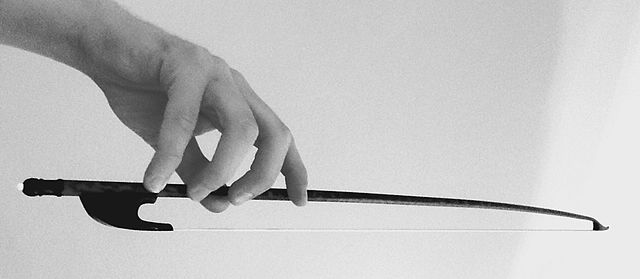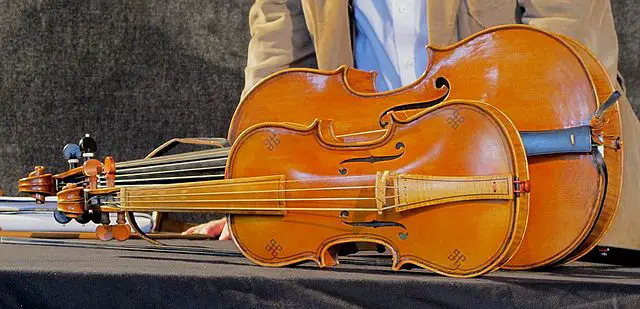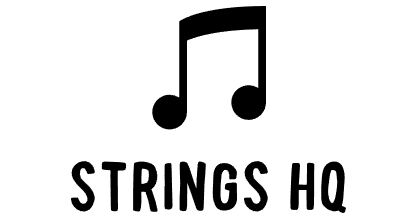If you are wondering about the differences between the modern violin and the baroque violin, you’re not alone. Both are part of the violin family, have four strings, and are played using a bow.
Despite their similarities, there are significant differences between the two instruments including the shape of the instrument and the materials they are made from. They are made for different music and produce different sounds.
Within this article, we go into detail on the differences between the modern violin and the baroque violin.
Summary
The baroque violin is shorter and wider than the modern-day violin, resulting in a quieter and softer sound. Baroque violins use catgut for strings rather than metal which produces a more mellow sound, perfect for baroque music.
What Are the Differences Between Modern and Baroque Violins?
Baroque violins have some substantial differences that set them apart from modern violins. Different features affect the sound quality significantly and make baroque violins well suited to the softer sound we often associate with baroque music.
Size and Shape
The Baroque violin is generally shorter and wider than a modern violin. This allows for a more nuanced sound, but this configuration also comes with less intensity. Baroque violins are rather quiet and sound soft.
The Neck
The neck of the baroque violin differs from that of the standard violin. The baroque neck is at an almost straight line, or at a slight incline, from the body of the violin. The modern-day violin has more of an angle between the neck and the body.
This means the pressure of the strings on the bridge is greater for a modern-day violin. This often means the bridge height is higher on modern-day violins compared to baroque.
The Fingerboard is often shorter and thinner on a baroque violin.
Chin-rest and Shoulder-rest
Baroque violins don’t use chin-rests or shoulder rests. Chin-rests were not used on violins until the 19th century, and shoulder rests were not invented until the 20th century.
Baroque violins are played resting on the collar rather than the shoulder.
Strings
In the baroque era, sheep gut was widely available for string manufacturing whereas metal was not. Sheep gut is wound very tightly creating ‘catline’. Gut strings are known to be responsive to the slightest movement, but have the disadvantage of being easily affected by environmental factors such as humidity.
More modern instruments are made from metal strings or other synthetic materials. They are more stable and durable but don’t generate the same mellow quality as gut.
Bow
Baroque bows had a convex shape that was quite similar to the actual hunting bows, bending outwards in the middle. They have a pointed swan-bill tip.
Bows had many iterations during the baroque era depending on the style of music being played. Most alterations were made to the length where shorter bows suited dance music whereas longer bows suited legato-style phrasing.
Modern bows curve inwards in the middle, the opposite way to baroque. A major invention in the 19th century was made by François Xavier Tourte enabling the tightening of the bow hair. This enabled users to dictate how tight they want the bow – the tighter the hair, the straighter the bow.

How Does a Baroque Violin Sound Compared to a Modern Violin?
The baroque violin is well suited to playing longer, legato phrases. To the listener, it can seem that there are no gaps when the player changes notes.
The sound of the baroque violin is mellow, and the following factors impact the timbre of the violin:
- The placement of the instrument
- The differences in dimensions
- The weight of the violin and bow
- The type of strings used
- The bow design
- The techniques used in playing at the time
The baroque violin, due to being smaller with a lighter bow, creates a more tinny quality compared to the larger and heavier standard violin.
There are plenty of votes though that a Baroque violin gives gentle tones compared to the forcefulness of new violins. It’s also devoid of the ornaments of our modern-day music, even though it’s capable of producing them. It’s particularly free from vibrato effects.
This is quite clear in Sato’s wonderful performance of Bach’s Violin Sonata no. 1 in G minor BWV 1001. The experience is enchanting and almost out of this world.
Is Playing the Baroque Violin Different From Playing the Modern Violin?
There are many technicalities that differentiate playing a Baroque violin from playing a modern violin. Here are some of them.
- There are no chin or shoulder rests in a Baroque violin, so the violinist needs to stand and move in a different manner.
- The Baroque violin is typically much lighter than a modern one, and so is its bow. This allows for far more agility while playing.
- The strings of the Baroque violin are made from catgut, which is far more responsive and tactile than the metallic or synthetic materials used in modern-day strings.
- The modern violins were made for creating a louder sound, but that came at the expense of the nuances that they could achieve. Contrary to that, the Baroque violin focuses more on nuance.
- The dimensions of every part of the Baroque violin are different from these of a modern violin. Thus, a player needs to relearn finger placement.
- The shape and weight of the Baroque bow are quite different from their modern counterparts. The manner of moving the bow also needs relearning.
- There are plenty of techniques and musical ornaments that were created after the Baroque period, and these are exclusive to modern violins. The players also have to learn specific techniques for playing a Baroque violin.
What Is a Baroque Violin?
The Baroque violin was primarily used during the Baroque period of 1600 – 1750. Baroque Violins and replicas are also occasionally still used today.
The Baroque Violin shares many features with modern-day violins. That’s because they aren’t two individual instruments, but rather a continuation and development.
The craftsmen who made the Baroque violin were followed by other grandmasters, like Antonio Stradivari and Nicolò Amati, who carried on that legacy. Eventually, these designs became our current modern violins.
Interestingly, some craftsmen remained true to the original and continued making violins in the original Baroque form. This is especially true in Germany and a few other parts of Europe.
The Baroque violin itself has seen plenty of changes since the inception of violins in 1610. For several decades violin makers reserved the right to produce instruments of non-standardized sizes and tuning. This is unlike the modern day Violin, where they are tuned in 5ths, have four strings and are produced in standardized sizings.
This served the musicians well as long as their work was localized in small geographical areas. However, as time went by, the mobility of art increased. Also, the musicians started using more rigorous methods in writing and performing music scores.
Thus, from that point on, the need arose to standardize the violins. The ‘common’ designs of the Baroque violins are usually taken from the ones made later on. Specifically, during the rich century from 1650 to 1750.
Baroque violins have some characteristics that make their sound rich, a tad tinny, and rather unique in its timber. It’s more suited to the musical compositions that were created during that period.
It’s not surprising then that many musicians are exploring this traditional instrument. It’s a whole new experience, and it gives a sense of authenticity while playing a Bach or a Vivaldi.

How Do You Hold a Baroque Bow?
There are actually no hard and fast rules regarding the right way to hold a bow. However, music teachers often have a preferred way, and that’s what their students go with. It eventually becomes a legacy that goes from one generation to the next.
Mostly, the Baroque bow was held in the same manner that the modern bow is held. This means placing the thumb on the lower side of the stick and pointing it in the direction of the frog.
There was another intriguing method which was referred to as the French grip. That involved increasing the tension of the bowstrings by pressing down on them. The thumb was used for applying that extra pressure.
Conclusion
Playing a musical piece that dates back to the 17th or 18th centuries is always a pleasure. It taps into very different tastes, lifestyles, and cultures.
Using a Baroque violin to recreate the essence of that historic period is quite an experience. And it’s even more rewarding as the sound quality of this instrument is simply stunning.
Comparing the modern violin vs. the Baroque violin doesn’t really show that one is better than the other. It just brings out the beauty inherent in each of them.
